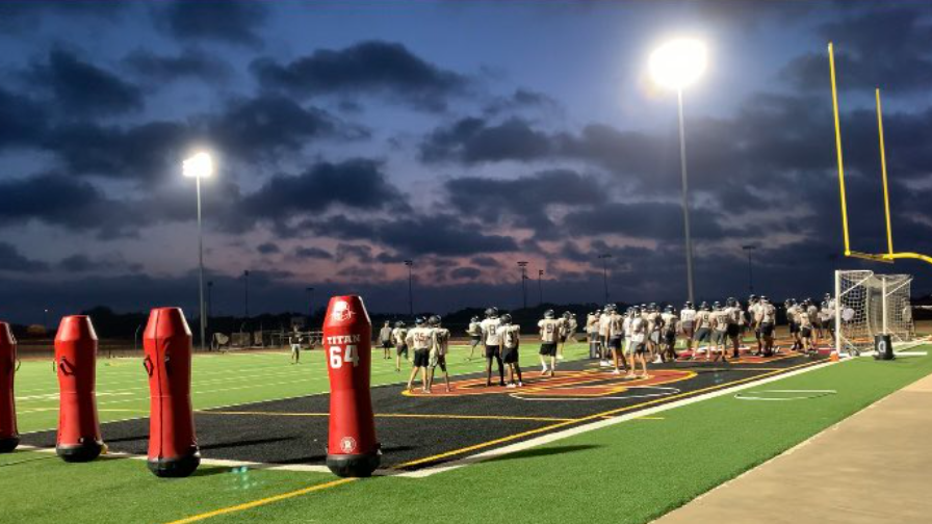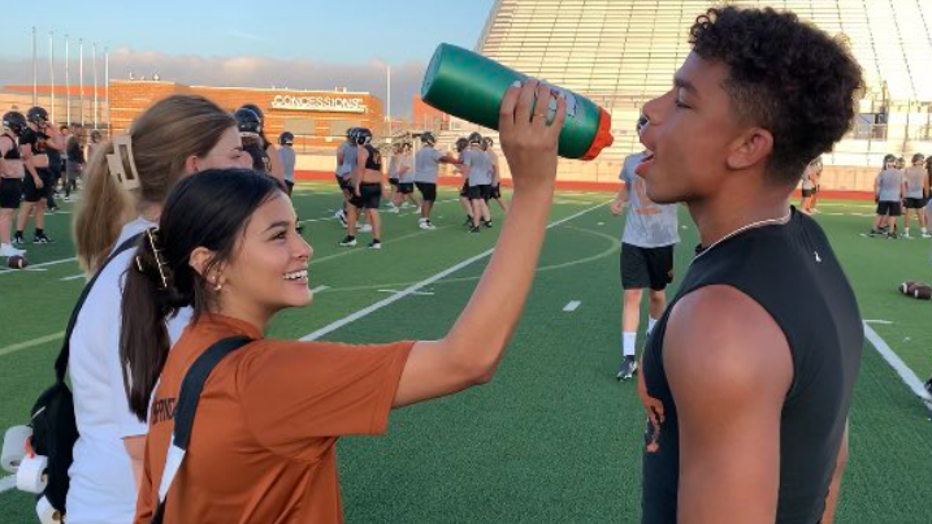Texas high school football players prepare for heat
HUTTO, TEXAS - The bright lights illuminating Texas high school football fields are familiar sights.
But in early August, the score boards are not counting down a game. For players, this is practice time.
"I had a bit of nerves, it's year three for me on varsity. And it's just it's just got the nerves. But you get used to it," said Hutto High Player Kenneth Suttles.
What's hard to get used to is the hard-hitting high temperatures of August. It's why many schools practice in the mornings.
"I think it's been brought to our attention a lot more, you know, the old school style of, you know, Bear Bryant just getting out there and going to, you can't go anymore. We really gotta listen to our bodies and listen to our kids bodies," said Hutto High Head Coach Will Compton.
This year, for many coaches, it feels a lot like the drought of 2011.
"Our grass fields are gone. We don't have any I mean, with the water restrictions, with where we're at, and you can just feel the crispness on it. So we're really forced down to the turf fields, which is great until that turf field gets really hot," said Rouse Head Coach Joshua Mann.
The state has strict rules limiting how long a practice can last during periods of high heat.
"With our freshman group. What we have to do is we have to take 15 to 20 minutes of work. They mix in 5 minutes a break with their troupe. Take the hats off, shoulder pads off and then have set and rest and get some water and hydrate through there and then just monitor that all the way through is the biggest thing that we can do," said Compton.

Key safety points include:
- Multiple water breaks
- Temperature & humidity checks
- Weigh loss monitoring before and after practice
- Properly replacing lost body salt
"We actually educate our kids to from day one, we talk about hydration and what they need to be doing drinking throughout the day and how often and even looking at their urinary output. So there are a lot of different strategies that we do with that. But the biggest change obviously has been going in the mornings," said Rouse Athletic Trainer Coach Wayne Lauritzen.
Student-athletic trainers, who never take a snap, may be the most important team member on the field.
"They are prepared to look for signs. They are CPR certified and Safety First Aid trained. They know what to look for as far as signs. They know what to do. They know when to step in and make sure that the kids hydrate," said Hutto Athletic Trainer Coach Dulce Guebara
The trainers are allowed to provide water anytime during a practice.
"I think it's just made us better in the long run because we have to be more organized with what we do," said Mann.

And then, there’s the modified coolers. Known as camels, this one with copper tubing inside, cools the water from a connected hose. They're swarmed by players during breaks like an unprotected QB. Preparing for this pre-season heat, started long before the practice began.
"You've got to know your body, and you've got to you've got to understand your limits. The other thing is the biggest challenge, you know, is, you know, kids getting here in the summer and get acclimated through the summer, strength conditioning. And so we had a great turnout this summer. So the kids that have been here and been active all summer haven't seemed to have as many problems as some of the kids who are not as active," said Compton.
The state still requires the first five days of pre-season practice to be done without full pads. An acclimation period to prepare for game nights which are known to be hot well into September.

